Yubae-no-Ma
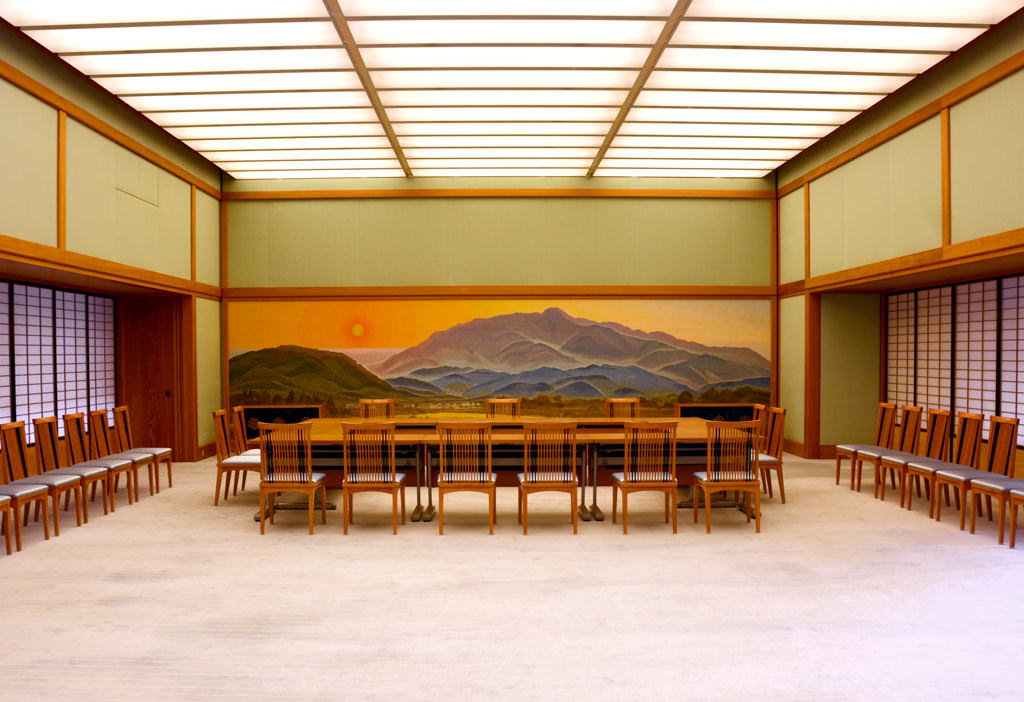
This space is used for conferences such as ministerial meetings, ryurei-style tea ceremony, and waiting area for banquets. The name Yubae-no-Ma takes a character each from the names of two pieces of tapestry, Hiei Getsuei and Atago Yūshō, hanging on the east and west walls of the room.
Highlights
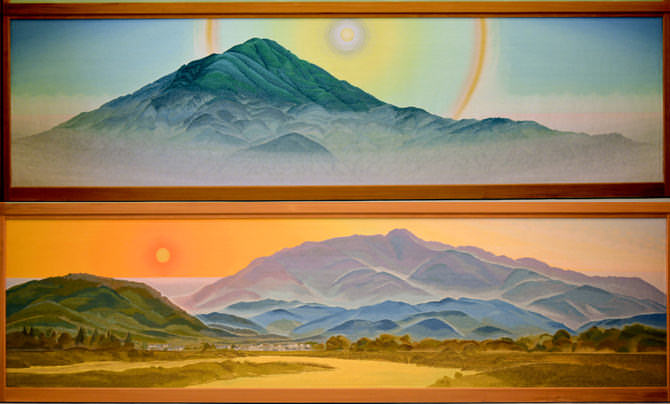
Tapestries: Hiei Getsuei and Atago Yūshō
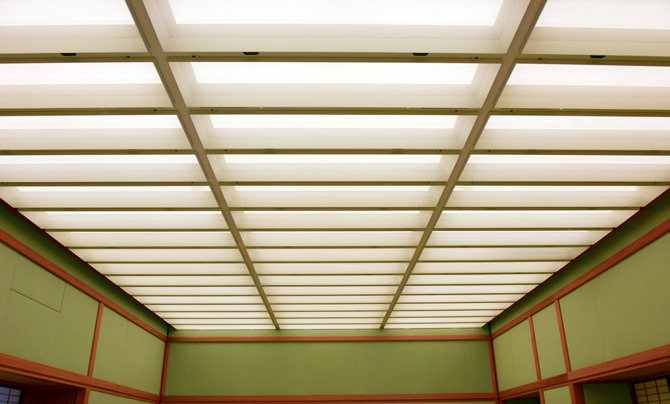
Illumination Design
The illumination is directed against the ceiling, indirectly brightening the room through reflected light. During cocktail parties, the lighting can be switched to produce a starry sky or firefly effect.
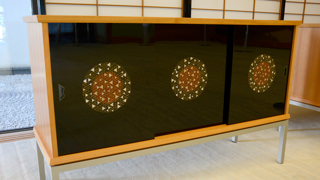
Decorative Cabinets in Sanshisuimei-Motif
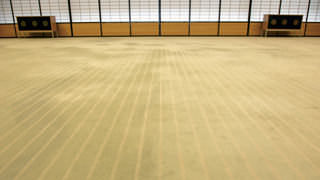
Dantsu Carpet in Water Motif
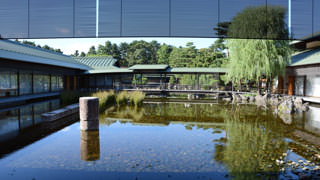
The Garden View from the Corridor

![Kyoto State Guest House [SP]](https://www.geihinkan.go.jp/wp-content/themes/geihinkan/assets/img/kyoto/common/toplogo_kyoto_sp_bk_en.png)
![Kyoto State Guest House [PC]](https://www.geihinkan.go.jp/wp-content/themes/geihinkan/assets/img/kyoto/common/toplogo_kyoto_bk_en.png)